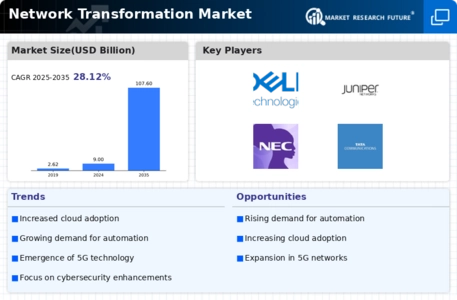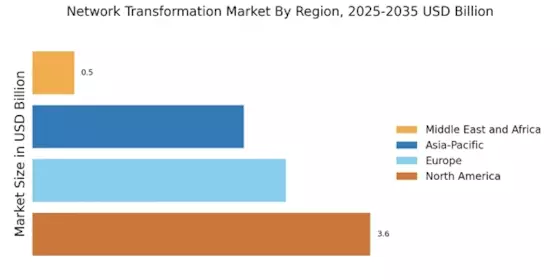Leading market players are investing heavily in research and development to expand their product lines, which will help the network transformation market grow even more. Market participants are also undertaking various strategic activities to expand their footprint, with important market developments including new product launches, contractual agreements, mergers and acquisitions, higher investments, and collaboration with other organizations.
An increasingly competitive market environment, the network transformation industry needs to provide cost-effective solutions and offerings. Businesses in this industry must deliver products and services that are economically viable and offer a high-value proposition to their customers. By offering cost-effective solutions, companies can attract more customers, retain existing clients, and sustain growth in a dynamic and evolving market landscape.
Manufacturing locally to minimize operational costs is one of the key business tactics manufacturers use in the Network Transformation industry to benefit clients and increase the market sector. In recent years, the Network Transformation industry has offered healthcare some of the most significant advantages.
Major players in the Network Transformation Market, including Ciena Corporation (US), Cisco Systems, Inc. (US), Telefonaktiebolaget LM Ericsson (Sweden), Dell Inc. (US), FUJITSU (Japan), Juniper Networks, Inc. (US), Hewlett Packard Enterprise Development LP (US), Intel Corporation (US), IBM Corporation (US), NEC Corporation (US), Ribbon Communications Operating Company, Inc. (US), Wipro Limited (India), TATA Communications (India)., and others, are attempting to growing market demand by investing in research and development operations.
NEC Corporation, a Japanese multinational IT and electronics corporation headquartered in Minato, Tokyo, underwent a rebranding in 1983, changing its name from Nippon Electric Company, Limited to NEC. Recently, NEC Corporation acquired Blue Danube Systems, an information technology company based in Japan. Blue Danube Systems provides Open RAN solutions, end-to-end Open 5G solutions, and system integration expertise.
This acquisition enables NEC to enhance its customer service capabilities and expand its assets in North America. It also allows NEC to offer a broader range of Open RAN solutions to meet its customer's specific requirements and preferences. Blue Danube Systems, based in the United States, is renowned for its wireless technologies for mobile networks and other applications.
Cisco Systems, Inc., commonly known as Cisco, is an American-based multinational digital communications technology Conglomerate Corporation headquartered in San Jose, California. Cisco launched Cisco Plus, a step toward network as a service. According to Cisco, Cisco Plus will offer as-a-service models for its networking, computing, and storage hardware.


















Leave a Comment